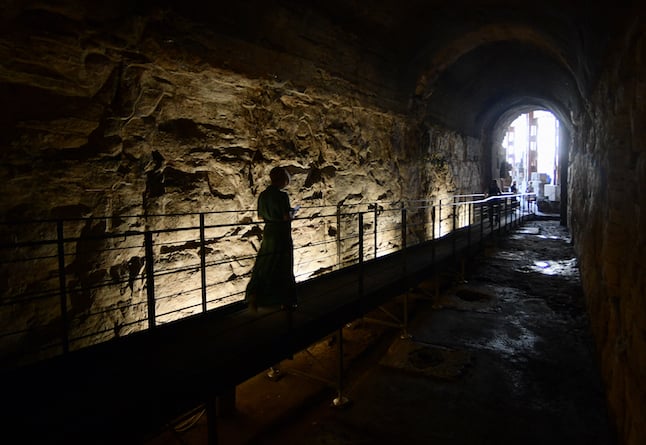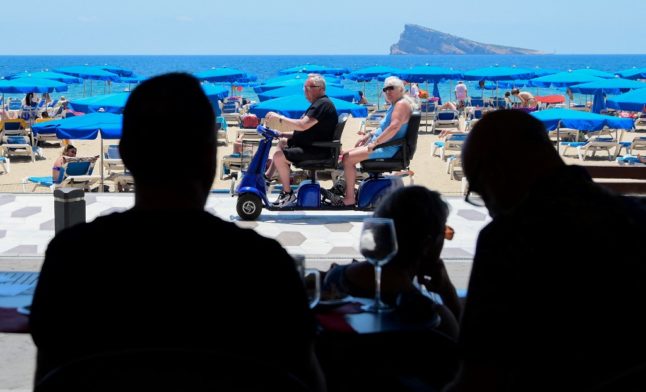The din of caged animals, the smell of gladiators’ fear and the thunder of tens of thousands of cheering spectators above have all evaporated with the passage of time.
But walking through the bowels of the Colosseum, the subterranean ruins of ancient Rome’s most famous amphitheatre, the extent to which technical expertise was harnessed to such bloody ends becomes painfully clear.
READ ALSO: Ancient Roman home and mosaics unearthed during Italian apartment renovation
“It was dark, smelly. There were terrible conditions for the slaves and animals,” said guide “Cristina”, showing journalists through the underground.
Once covered by a wooden floor, the maze of dark corridors and chambers served as the amphitheatre’s backstage – and the last holding space for men and beasts who were released above to meet their fate.
“Let’s imagine that from the darkness, suddenly they emerged,” Cristina said. “Imagine the terrible noise that came from the arena.”
Monument inside monument
Sponsored by Italian luxury shoe group Tod’s, the restoration, begun in 2018, involved 81 archaeologists, engineers and others working to clean and reinforce the walls within the hypogeum, which stretches over half a hectare.
“We finally are returning to the public this monument within the monument,” site director Alfonsina Russo told reporters.

Tod’s chairman Diego della Valle pledged 25 million euros ($30 million) in 2011 for the entire restoration of the Flavian Amphitheatre, the Colosseum’s real name.
Yet to be constructed is a welcome centre at the UNESCO site, which received seven million visitors a year before the coronavirus pandemic.
Alive or dead
The Colosseum was first completed in 80 AD and the hypogeum constructed
under Emperor Domitian.
The site was last used in 523 AD and the hypogeum was gradually covered by
rubble until being dug out in the 19th century.
The labyrinthian system of passageways and chambers were key to the spectacles above ground, whether gladiator fights, hunts with wild African animals, or public executions.
An imposing eastern tunnel led to a gladiator training camp, which included a hospital and morgue. Animals also entered the amphitheatre via the tunnel before being caged.
Visible on the herringbone brick floors of the 15 tunnels are holes cut into travertine and lined with bronze, the bases for massive winches to hoist up cages, set scenery, or platforms holding gladiators. It required eight slaves to spin each winch.
Approaching the level of the amphitheatre, the cage doors would open, thrusting the hungry, disoriented beasts into the arena.
Despite the importance of the Colosseum’s sub-structure, it will soon be covered under a controversial decision to build a new floor.
Last month, Italian engineering firm Milan Ingegneria won the contract for an €18.5 million design, featuring wooden slats that will open and close allowing for a glimpse into the hypogeum beneath. The project is due to be finished in 2023.



 Please whitelist us to continue reading.
Please whitelist us to continue reading.
Member comments